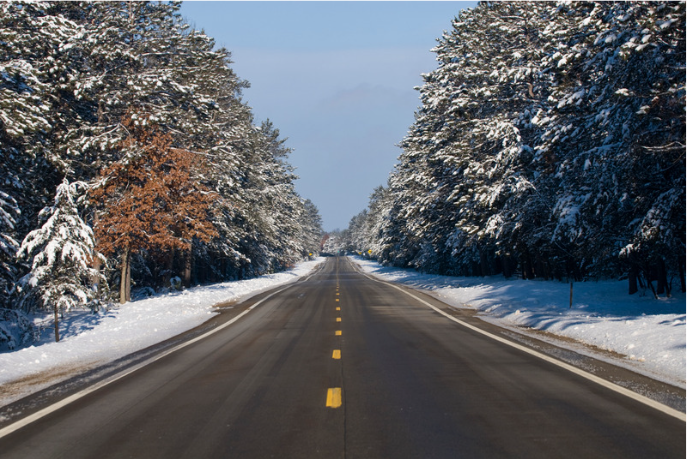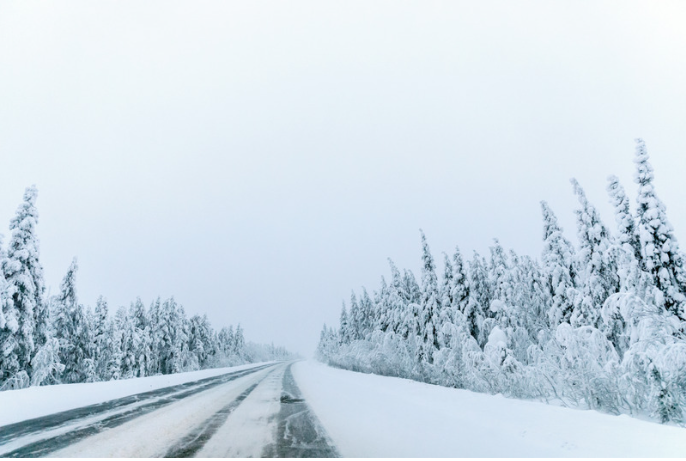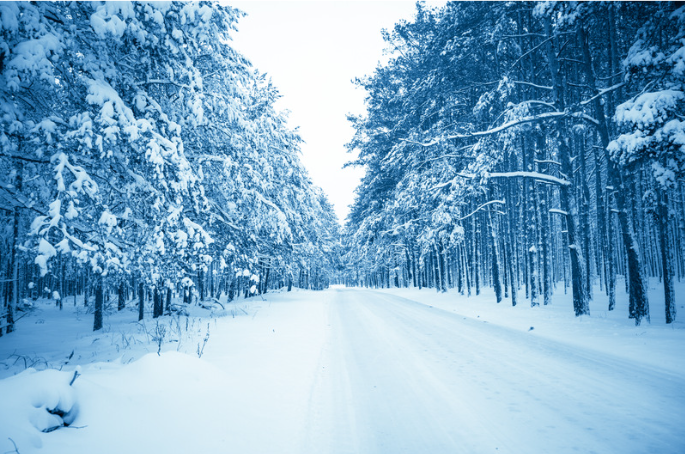Winter Maintenance Policy
Objectives:
- Establish clear service standards and levels for all assets managed by the Public Works division
- Ensure that maintenance activities comply with or exceed the requirements of the Minimum Maintenance Standards (MMS) O.Reg. 239/02
- Develop a protocol for declaring a significant weather event.
Our Assets
| Assets | 2017 in KM | 2024 in KM |
|---|---|---|
| Hard surface roads (asphalt, surface treatment) | 166 | 179 |
| Gravel Roads | 88 | 88 |
| Sidewalks | 30 | 36.8 |
| Multi-use Pathways | 3 | 3.5 |
| Bicycle Lanes | 6.20 | 6.20 |
Roads
List of City of Clarence-Rockland's roads winter classification [PDF/1.8MB]
City of Clarence-Rockland – Level of Service and Prioritization
| Priority | Functional Class and Highway Classification | Surface Treatment Standards | Snow Accumulation - Depth * | Snow Accumulation - Time * | Ice Treatment - Prevention (hours) * | Ice Treatment - Formation (hours) * |
|---|---|---|---|---|---|---|
| 1 | Main Street | Bare pavement | 8 | 12 | 16 | 8 |
| 2 | Major collector road (all classes included) All other Class 3 roads | Bare pavement | 8 | 12 | 16 | 8 |
| 3 | Minor collector road (all classes included)and All other Class 4 roads | Bare pavement | 8 | 24 | 24 | 12 |
| 4 | Classes 5 and 6 local roads with elevated level of service (ie. essential services, schools, transit, steep horizontal or vertical curves, or designated City cycling path | Bare pavement | 10 | 24 | 24 | 12 |
| 5 | Class 5 rural and urban local roads | Centre bare | 10 | 24 | 24 | 12 |
| 6 | Class 5 residential local roads and Class 5 local gravel roads | Snow packed | 10 | 24 | 24 | 16 |
| 7 | Class 6 rural local roads and Class 6 residential local roads and Class 6 local gravel roads / | Snow packed | 10 | 24 | 24 | 16 |
Bare pavement
All wheels of a vehicle are on a bare surface
Bare includes
- Bare and dry : most of the road surface is bare
- Bare and moist : most of the road surface is moist

Centre Bare
Two wheels of a vehicle are on a bare surface
Partly covered includes :
- Partly icy : two wheels on bare surface and other wheels likely on ice
- Partly snow covered : two wheels on bare surface and other wheels likely on loose snow
- Partly snow packed : two wheels on bare surface and other wheels likely on snow bonded with the road

Snow Packed
All wheels are on snow bonded to road.

Bare pavement
Start
- Salt application at the start of the event just before and/or as accumulation begins
During
- Plowing to maintain Level of Service. In some cases, salt could be applied during event to prevent snow pack formation (i.e. very cold temperatures)
End
- Salt application at end of event, after plowing operations are completed.
Centre Bare
Start
- No Salt application at the start of the event. Monitor trouble spots.
During
- Plowing to maintain Level of Service. In some cases, salt could be applied during event to prevent snow pack formation (i.e. very cold temperatures) and/or to take care of trouble spots (i.e. intersections, hills and sharp curves).
End
- Salt application at end of event, after plowing operations are completed.
Snow Packed
Start
- No Salt application throughout event. Monitor trouble spots (intersections, hills and sharp curves).
During
- Plowing to remove loose snow and maintain Level of Service. No Salt application through event to ensure bonding between snow and pavement. In some cases, abrasives to be applied to trouble spots (i.e. intersections, hills and sharp curves).
End
- Abrasives application (intersections, hills and sharp curves) at end of event after plowing operations are completed.
What is a significant weather event:
- Ontario Regulation 239/02 allows municipalities to declare a significant weather event if the following criteria are met: • The weather event qualifies as a weather hazard under the regulation
- Meets alert criteria established by Environment Canada’s Public Weather Alerting Program (events such as blizzards, blowing snow or winter storms)
- Is forecasted or currently occurring
- Poses a significant risk to road users
- It is not a notice of reduced level of service or road closure.
- Serves to notify the public to exercise caution, as it may take longer to restore road conditions to normal.
When a significant weather event is declared:
- The standard timelines for meeting the City’s winter maintenance Level of Service are suspended.
- All assets are in a state of repair concerning snow and ice conditions until the significant weather event has concluded.
How to declare or end a significant weather event:
- By sharing a notice through various channels, including social media, the City’s website, newspapers, radio, television and/or the police service.
- Public Works division will maintain a detailed record of the declaration.
- We clear snowbanks at intersections for visibility issues
- Homeowners are responsible for ensuring clear sight lines at the end of their driveways
- Our snowplows and sidewalk machines may leave snow/windrow in residents’ driveways; it is the residents’ responsibility to clear the snow
- Property owners are responsible for maintaining their own property
- The City has access to the right-of-way adjacent to a homeowner’s property for snow storage
How can residents help?
- During winter, if possible, remove snow/ice from catch basins to ensure proper water drainage during quick thaws
- Place recycling and waste in driveways, avoiding placement in snowbanks or on sidewalks
- This makes it easier and more efficient for clearing of roadways right to the curb
- Keep their vehicles off the road as much as possible
- Clear roads allow us to clear the roadways more quickly and thoroughly
From November 15th to April 1st of each year, the City's snow-clearing team is working to keep our roads safe and clear for motorists, public transit, pedestrians and cyclists.
Residents can help by ensuring that vehicles are not parked on the street during a winter parking ban.
During this period, street parking is prohibited between the hours of 1:00 am and 7:00 am.
